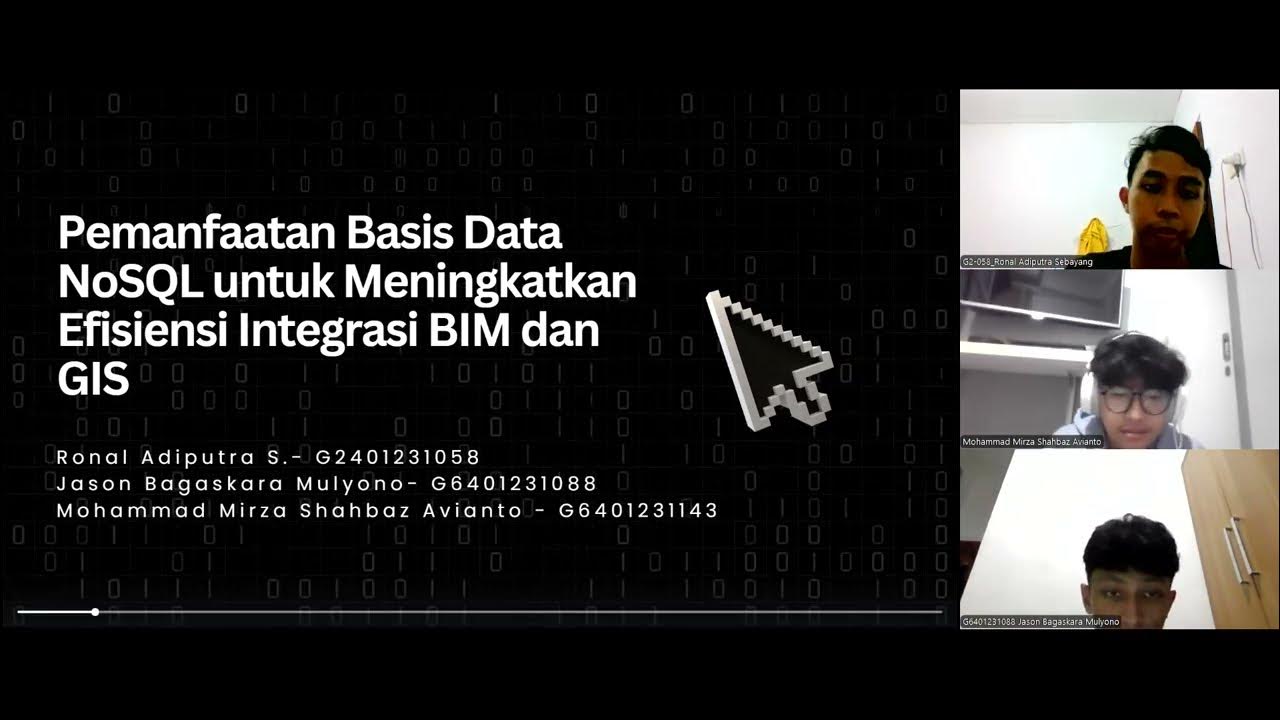Which Database Model to Choose?
Summary
TLDRThis video script explores the challenges of data modeling for scalable applications, comparing various database types. It highlights the limitations of traditional relational databases and introduces alternatives like key-value, column-family, document, and graph databases, each with their own advantages and use cases. The script discusses performance, scalability, consistency, and the importance of choosing the right database model for specific needs, emphasizing the trade-offs between speed, complexity, and data integrity.
Takeaways
- 😌 The biggest challenge in app development isn't coding but data modeling at scale to avoid performance issues.
- 📊 Traditional relational databases still dominate the market with 72% share, using tables and relationships well-suited for most apps but can be a bottleneck with growing data complexity.
- 🔄 Alternative data models like graph and wide-column stores can handle complexity and scale better, but choosing the right one depends on the project's unique needs.
- 🔑 Key-value databases are simple, fast for data retrieval, and well-suited for in-memory storage, providing sub-millisecond response times.
- 💡 While in-memory storage like RAM is fast, it's not practical for all database types due to cost and the need for data persistence on disk.
- 🚀 Key takeaway: Key-value databases are optimized for high performance and low latency, making them ideal for caching frequently used data.
- 📚 Wide-column stores are interesting for their storage in column families and are highly partitionable, allowing horizontal scaling but not optimized for analytical queries.
- 🔍 Document databases excel at storing related information in a single document, simplifying data handling but risking data duplication and inconsistency if not managed carefully.
- 🔗 Relational databases are best for transactional processing with strong ACID guarantees, ensuring data integrity and consistency, but can struggle with horizontal scaling.
- 🌐 Graph databases are powerful for complex, multi-hub relationships, offering fast queries by traversing relationships directly without joins, but require expertise to manage.
- 🛠️ Each database type has its use cases and limitations; choosing the right one involves understanding the project's requirements for data structure, scalability, and query complexity.
Q & A
What is the biggest challenge in app development according to the script?
-The biggest challenge in app development is not writing code, but figuring out how to model data in a way that works at scale to prevent issues like slow performance, data inconsistencies, and difficulties in adding new features.
Why might traditional relational databases become a bottleneck as data grows in size or complexity?
-Traditional relational databases can become a bottleneck because they use tables and relationships to model data, which may not scale efficiently as data size or complexity increases.
What are some alternative data models mentioned for handling complex data?
-Alternative data models mentioned include graph databases, which can handle complexity, and wide-column databases, which can scale data at high levels.
How does a key-value database model data and what are its advantages?
-A key-value database models data as a collection of key-value pairs with unique identifiers, allowing for fast access. It uses a hash table to store keys and pointers to data values, making data retrieval very fast and efficient.
Why are key-value databases often stored in memory and what is the benefit?
-Key-value databases are often stored in memory due to their simple model and small data set, which allows for blazing-fast data retrieval, sometimes with sub-millisecond response times.
What are the limitations of storing all database types in memory?
-Limitations include the cost of memory, the need to persist data on disk for mission-critical apps to prevent data loss in case of a crash, and the fact that larger data sets can slow down the system regardless of the speed of the storage medium.
How do wide-column databases differ from traditional relational databases?
-Wide-column databases store data in column families and are not optimized for analytical queries that require filtering across multiple columns, joins, or aggregations. They can only be searched using the primary key, unlike relational databases.
What is the significance of the primary key in wide-column databases?
-The primary key in wide-column databases consists of one or more partition keys and zero or more clustering keys. It is used to distribute data across multiple nodes and sort data within a partition, enabling horizontal scaling.
Why are document databases a good match for object-oriented programming?
-Document databases are a good match for object-oriented programming because they allow data to be stored in a format that can be naturally represented as an object, such as JSON, without the need for translation.
What are the main benefits of using a graph database?
-Graph databases excel at handling complex, multi-hub relationships between entities, allowing for fast and efficient querying of densely connected data without the need for expensive join operations.
What are some trade-offs of using a document database for transactional processing?
-Document databases may not be the best choice for transactional processing due to the lack of enforced referential integrity, which can lead to data inconsistencies if changes to one document are not reflected in related documents.
Outlines

This section is available to paid users only. Please upgrade to access this part.
Upgrade NowMindmap

This section is available to paid users only. Please upgrade to access this part.
Upgrade NowKeywords

This section is available to paid users only. Please upgrade to access this part.
Upgrade NowHighlights

This section is available to paid users only. Please upgrade to access this part.
Upgrade NowTranscripts

This section is available to paid users only. Please upgrade to access this part.
Upgrade NowBrowse More Related Video

Databases in the Real World

SQL vs NoSQL in 2024 Make the Right Choice (Difference Explained)

Pemanfaatan Basis Data NoSQL untuk Meningkatkan Efisiensi Integrasi BIM dan GIS

100 Firebase Tips, Tricks, and Screw-ups

Cloud Datastore a NoSQL Document Store

Les Bases de Données (1/2) - Les Bases de données Relationnelles
5.0 / 5 (0 votes)